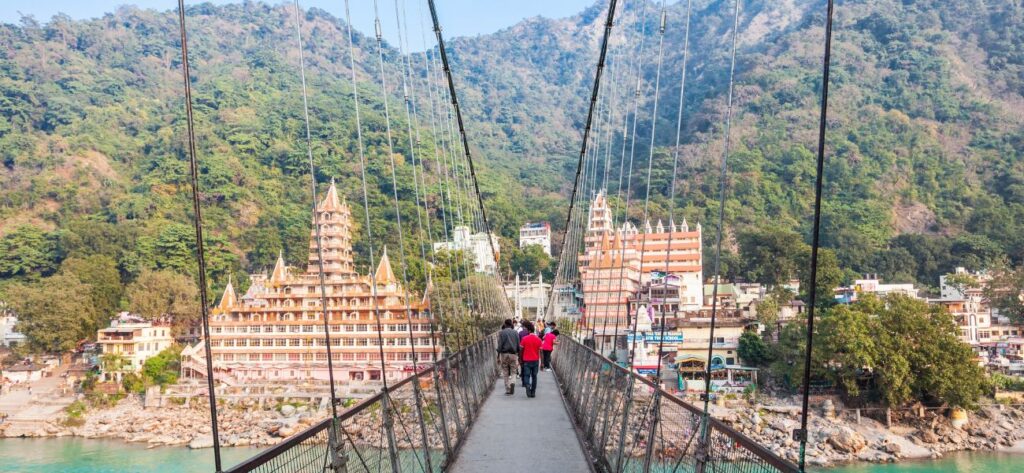Introduction
Laxman Jhula is one of the most famous landmarks in Rishikesh, Uttarakhand. This 450-feet long iron suspension bridge connects the villages of Tapovan and Jonk across the sacred Ganga River. Rich in mythological and spiritual significance, it attracts thousands of pilgrims and tourists each year.
Mythological Significance
According to Hindu mythology, Laxman Jhula marks the spot where Lord Laxman, the younger brother of Lord Rama, crossed the Ganga on a jute rope. To honor this event, a suspension bridge was built in 1929, replacing the earlier rope bridge.
Architectural Beauty
The bridge offers a stunning view of the holy river and surrounding hills. It is a pedestrian-only path, though bikes are often seen being pushed across. Standing mid-bridge, one can witness the powerful flow of the Ganga beneath and the peaceful ghats and temples on both banks.
Spiritual Vibe
Laxman Jhula isn’t just a crossing—it’s a spiritual journey. With temples like Laxman Temple and Tera Manzil Temple nearby, and the sounds of chanting and temple bells in the air, the entire area feels divinely charged.
Nearby Attractions
- Tera Manzil Temple: A multi-storey temple visible right from the bridge, offering panoramic views of the region.
- Ram Jhula: Another suspension bridge located nearby, often visited in the same trip.
- Ganga Aarti at Triveni Ghat: A divine evening experience, just a short distance away.
Shopping & Cafes
The area around Laxman Jhula has many small shops selling Rudraksha malas, yoga mats, souvenirs, and local handicrafts. Trendy cafés and rooftop restaurants offer a relaxing vibe with stunning views of the Ganges.
Closure & Access Info
In recent years, Laxman Jhula has been closed for vehicles due to safety concerns but remains open for pedestrians. Visitors are advised to check local updates before planning a trip.



